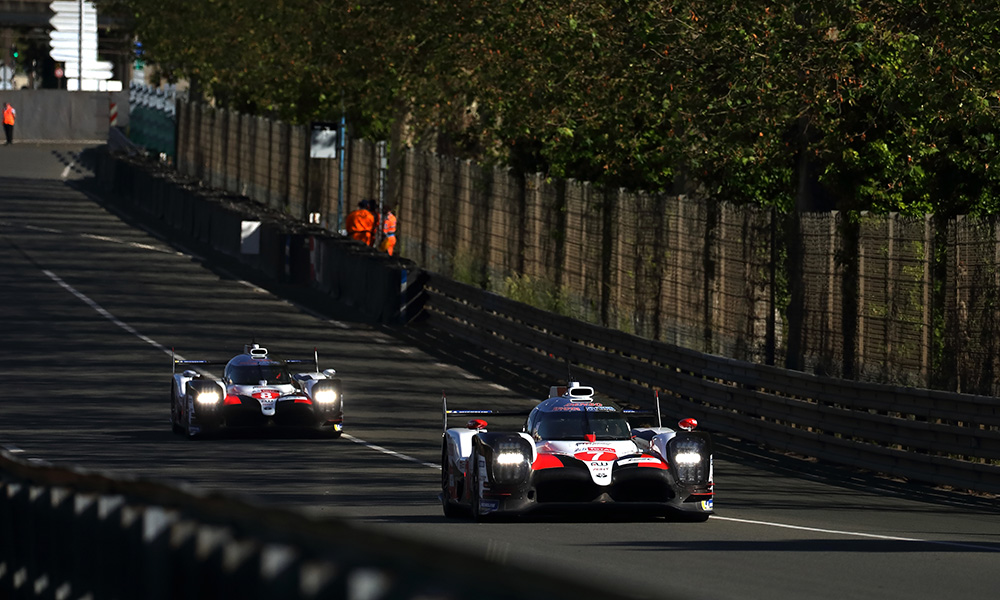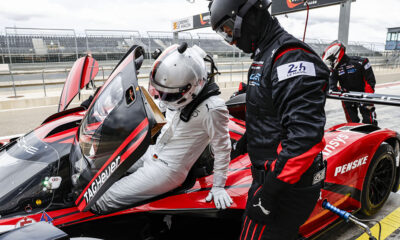
Photo: James Moy/Toyota
The LMP1 Equivalence of Technology for this month’s 24 Hours of Le Mans has been set, with Toyota’s stint length advantage from last year’s race being upheld.
The FIA’s declaration of fuel capacities for the non-hybrid LMP1 cars confirms the reinstatement of Toyota’s one-lap advantage over a stint after it was done away ahead of the Six Hours of Fuji in October.
Non-hybrid LMP1 cars will have less petrol to use per stint during the race, with both turbocharged and normally-aspirated machines receiving adjustments.
The turbocharged SMP Racing BR Engineering BR1 AERs have seen their per stint fuel allowance slide from 52.5 kg to 48.4 kg since last year.
The normally-aspirated cars from Rebellion Racing, DragonSpeed and ByKolles Racing will have 50.8 kg to use this month after contesting the 2018 race with the same amount as the turbos.
Any reduction in the petrol per stint allowance of the non-hybrids would mean that Toyota’s advantage of at least one lap would return for the WEC season finale.
Toyota’s EoT configuration remains unchanged from last year’s race, except the additional 10kg it received in advance of last weekend’s Test Day.
Three elements of the EoT – the petrol per stint allowance, the maximum petrol energy per lap and the refueling restrictor sizes of the LMP1 non-hybrid field – were not confirmed in the pre-Test Day bulletin.
For the race, the maximum petrol energy that the non-hybrid cars can expend over a lap of the 8.467-mile Circuit de la Sarthe has been defined as “unlimited”.
This full concession was granted by the WEC’s technical department ahead of last month’s Six Hours of Spa-Francorchamps and carries through to Le Mans.
Refueling restrictor sizes have also been set out, with the turbocharged SMP cars gaining 0.4 mm in diameter compared to 2018.
This marks an increase from 21.35 mm to 21.75 mm, while the normally aspirated cars have been given a slightly greater adjustment from 21.35 mm to 22.30 mm.
However, the restrictor sizes have decreased since the most recent round at Spa, where the turbos and the normally-aspirated cars refueled at 25 mm and 24.40 mm respectively.
This means Toyota will once again hold an advantage in the amount of time it takes to fill up its cars at each stop during the 24 Hours.
Toyota was the only LMP1 team that managed to consistently complete its pit stops in less than 70 seconds during last year’s race, which it won by 12 laps.


























